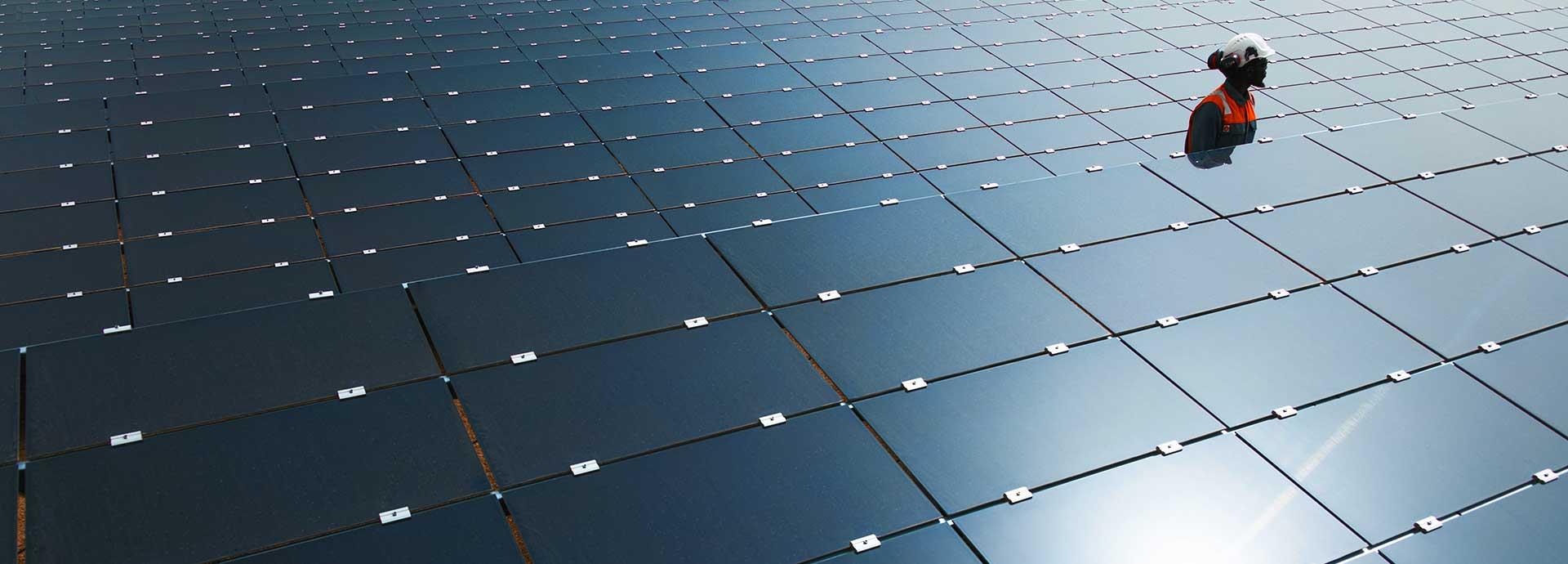

Renewables produce energy, but not necessarily only when it is needed. Wärtsilä is dedicating SparkUp Challenge 2018 to Power-to-X, a process to convert excess energy into something which can be used later.
Our entire energy system has been built upon a simple premise: generate power when you need it. This sounds rational enough, but solar and wind farms create electricity when the sun shines and the wind blows, and sometimes they produce more than can be immediately used. So, what do you do with this excess energy? Enter, Wärtsilä’s Power-to-X challenge.
“We can store this excess energy or make use of it,” explains Eleonor Hedström, Manager, Business Innovation at Wärtsilä. “Through the Power-to-X process, we can make use of this energy and turn it into gas or synthetic fuel. This means that electricity will become a raw material for the future. Wärtsilä is proactively working towards the power systems of the future, so Power-to-X innovations are an important part of our energy transition.”
Replacement for fossil fuels
While excess energy can be stored in batteries, the Power-to-X option transforms or converts that energy into something, such as gas or fuel, that can be used later.
In the conversion equation, the X can refer to a number of things: power-to-ammonia, power-to-chemicals, power-to-fuel, power-to-gas, power-to-heat, power-to-hydrogen, power-to-liquid etc. This project, though, specifically concentrates on power-to-gas and power-to-fuel conversions.
“Power-to-gas is an energy conversion process for making synthetic methane from water and carbon dioxide with electrical energy,” explains Jero Ahola, professor of Electrical Engineering at the Lappeenranta University of Technology. “The synthetic methane can be used as a direct replacement of fossil natural gas, for example in marine transportation or power generation. It is also a low-cost way to organise seasonal energy storage or to transport energy in large quantities by using existing infrastructure.”
A similar concept is Power-to-Fuel, which uses electricity to transform water and carbon dioxide into liquid fuel which could be used just like liquid fossil fuels.
“Power-to-gas enables the production of a direct replacement for fossil methane in all applications which are currently designed for natural gas. It can be manufactured practically anywhere,” Ahola continues. “Power-to-fuel could enable the decarbonisation of aviation, marine transportation, and heavy freighting while using our current infrastructure. Otherwise, the decarbonisation of these is considered very difficult to achieve. Batteries will have a significant role in hybrid power systems for ships, even though the primary energy would come from chemical fuel.”
Vision for renewables
Wärtsilä’s vision is to lead the way to a 100 per cent renewable power system for its customers, using smart technologies to help build a sustainable society. Power-to-X can be a major part of this process.
“This transition towards 100 per cent renewable energy future is happening,” says Hedström. “I am super excited about this and the role Wärtsilä plays in it: we are leading this change as engines and storage will provide the needed flexibility to integrate renewables and secure reliability.”
The Power-to-X concept sounds wonderful – and it is – but there are still hurdles to overcome.
“The technology for this is available, but not yet on an industrial scale yet,” Hedström explains. “That is where our SparkUp Challenge comes in.”
Collaboration with start-ups
The SparkUp Challenge is a call for start-ups to pitch their ideas to Wärtsilä. Winners get to collaborate with Wärtsilä specialists, get access to Wärtsilä’s prominent customer base, and receive EUR 50,000. Launched in 2017, the first SparkUp Challenge was on Smart Marine technology and was won by KNL Networks and PortCall.com. In 2018, the focus is on Power-to-X.
“Our purpose is to ‘enable sustainable societies with smart technology’, so the goal of the challenge is to find start-ups and scale-ups who have new innovations and business ideas,” says Hedström. “I hope we find one or two start-ups we can collaborate with to use this new technology faster.”
After the application period comes interviews, project scoping phase, and the challenge day where start-ups will pitch to a jury. Winners get a chance to collaborate in a project in a Wärtsilä Acceleration Centre or other testing facilities.
“Personally, I’m super thrilled about all that we have done, are doing and will do in the future,” Hedström says. “I am really looking forward to collaborating with these start-ups because together we can achieve really great things.”
Did you like this? Subscribe to Insights updates!
Once every six weeks, you will get the top picks – the latest and the greatest pieces – from this Insights channel by email.

